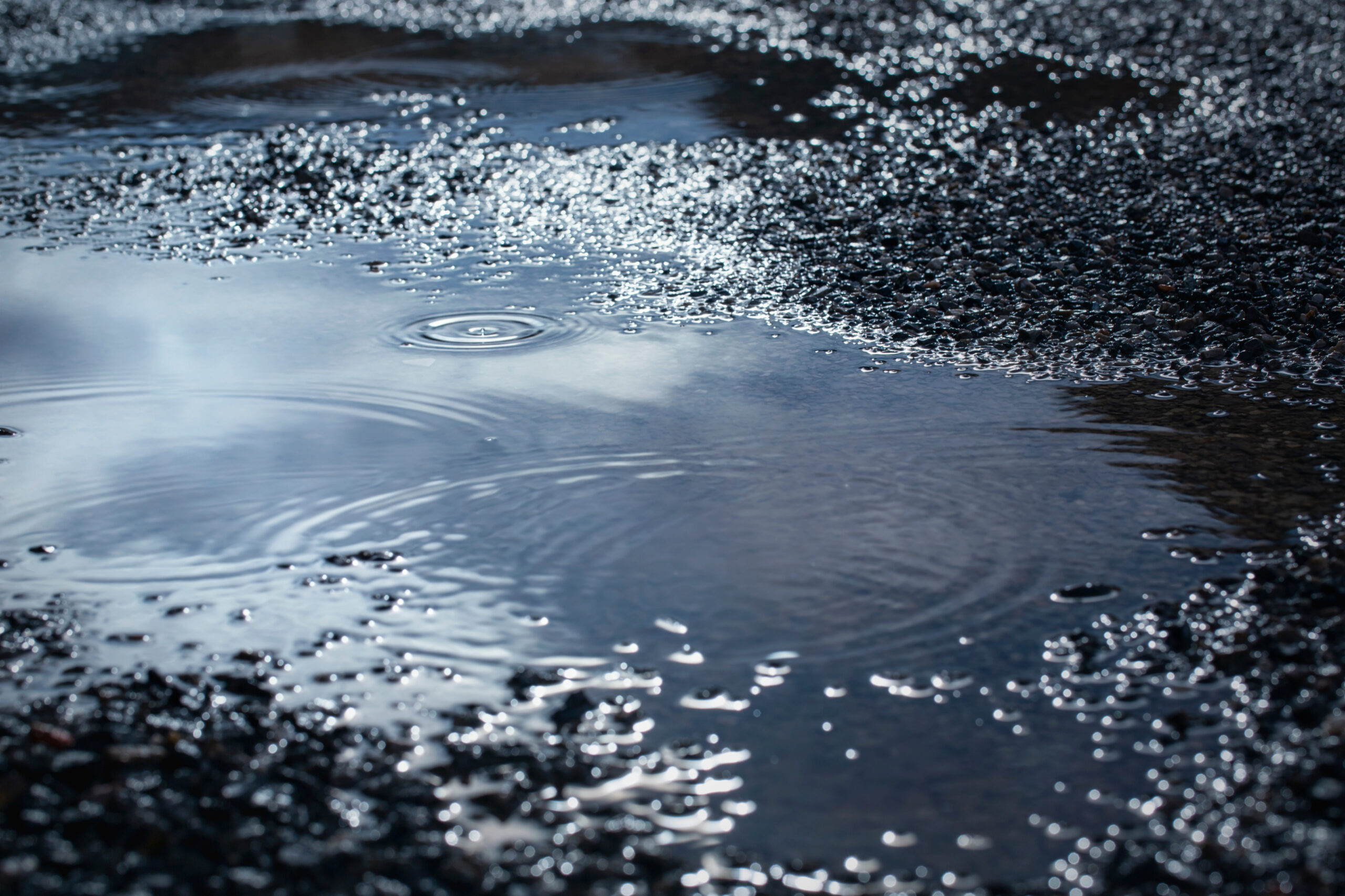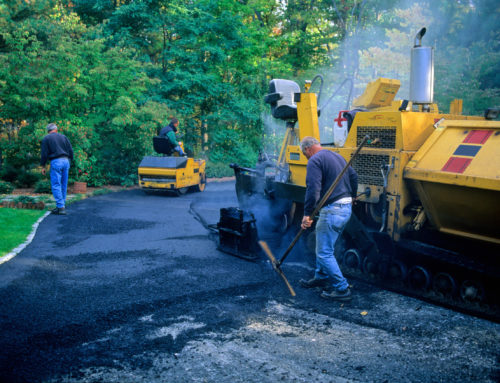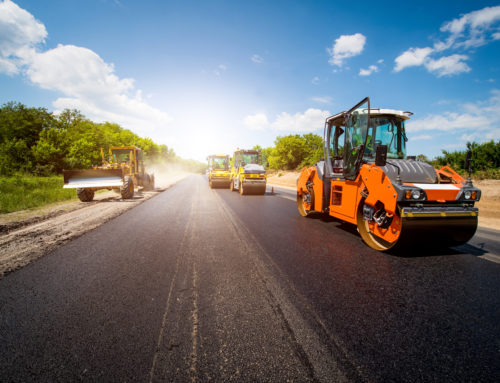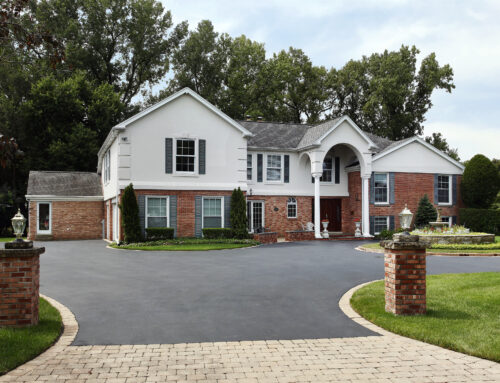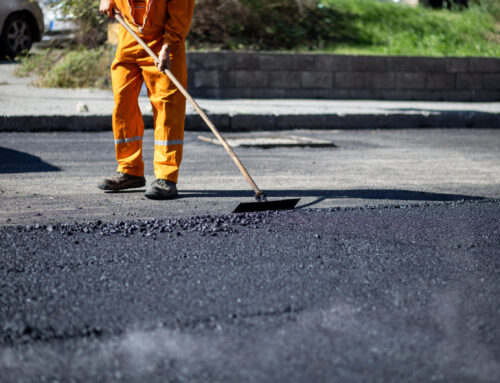Asphalt surfaces are built to endure heavy traffic, extreme weather, and constant use. However, even the most durable pavement is vulnerable to one of nature’s most persistent forces: water. Without proper drainage, water can wreak havoc on asphalt, shortening its lifespan and leading to costly repairs. This time on the Sunrise Asphalt blog, we’ll explore how proper drainage impacts asphalt longevity and why it’s a critical factor for maintaining durable, long-lasting pavement.
Note: It’s important for us to note here that we are not certified hydrologists and as such, can not guarantee certain things. We are pavement pros and have decades of experience so we know what we’re talking about, but we also know where the limit of our expertise lies. Hiring a hydrologist is always a worthwhile choice!
Why Drainage Matters
Water is one of the most common causes of asphalt deterioration. When water is left to pool or seep into the pavement, it can weaken the structure and accelerate damage. Here’s how poor drainage affects asphalt:
- Base Erosion: Water that seeps beneath the asphalt can erode the sub-base, leading to soft spots and structural instability.
- Freeze-Thaw Cycles: In colder climates, water trapped in cracks freezes and expands, causing asphalt to crack further and create potholes.
- Oxidation: Standing water exposes asphalt to increased UV radiation, which accelerates the oxidation process and weakens the binder that holds the pavement together.
- Cracking and Rutting: Poor drainage can cause uneven settling, leading to surface cracks and depressions that compromise the pavement’s usability.
Proper drainage prevents these issues by directing water away from the pavement, protecting both the surface and the layers beneath.
Types of Asphalt Drainage Systems
Effective drainage systems are designed to move water away from asphalt surfaces efficiently. Common drainage solutions include:
Surface Drainage
- What It Does: Directs water off the pavement surface using a slight slope.
- Benefits: Prevents pooling and reduces the risk of surface cracks and erosion.
Subsurface Drainage
- What It Does: Addresses water that seeps beneath the asphalt by installing drainage pipes or permeable materials.
- Benefits: Protects the sub-base and foundation from water damage.
Curb and Gutter Systems
- What They Do: Guide water into storm drains, keeping it away from the pavement.
- Benefits: Ideal for parking lots, streets, and other large paved areas.
Designing for Proper Drainage
To ensure asphalt longevity, drainage must be integrated into the paving project from the start. Here are key considerations for designing effective drainage systems:
- Slope and Grade
- Asphalt should be installed with a slight slope to guide water toward designated drainage points.
- A grade of 1-2% is typically sufficient for effective surface runoff.
- Permeable Materials
- Use permeable asphalt or base layers to allow water to flow through the pavement and into subsurface drainage systems.
- Strategic Placement of Drains
- Position drains at low points where water naturally collects.
- Maintenance of Drainage Systems
- Regularly clear drains and gutters to prevent clogs that can lead to standing water.
How Proper Drainage Extends Asphalt Longevity
Investing in proper drainage pays off in several ways:
- Reduced Repair Costs
- By preventing water damage, drainage systems minimize the need for crack sealing, pothole repair, and resurfacing.
- Enhanced Durability
- Asphalt with effective drainage withstands the elements better, maintaining its structural integrity over time.
- Improved Safety
- Proper drainage prevents standing water, reducing the risk of hydroplaning and accidents.
- Better Aesthetics
- Water pooling and erosion can lead to unsightly cracks and depressions. Drainage ensures a smooth, attractive surface.
Maintenance Tips for Asphalt Drainage Systems
Even the best drainage systems require regular maintenance to perform effectively. Here’s how to keep them in top condition:
- Inspect Regularly: Check for clogs, cracks, and other signs of drainage issues.
- Clean Drains and Gutters: Remove debris to ensure water flows freely.
- Seal Cracks Promptly: Prevent water from seeping into the pavement through small cracks.
- Regrade as Needed: Over time, the slope may shift due to settling or wear, requiring regrading to restore proper drainage.
Proper drainage is a critical factor in maximizing the lifespan of your asphalt pavement. By preventing water from pooling or infiltrating the surface, drainage systems protect the structural integrity of the asphalt, reducing the risk of costly damage and ensuring long-term durability.
Whether you’re installing a new asphalt surface or maintaining an existing one, prioritizing drainage is a smart investment in your pavement’s longevity and performance. For expert advice and professional drainage solutions, contact us today—because a little planning now can save you significant time and money in the future.

